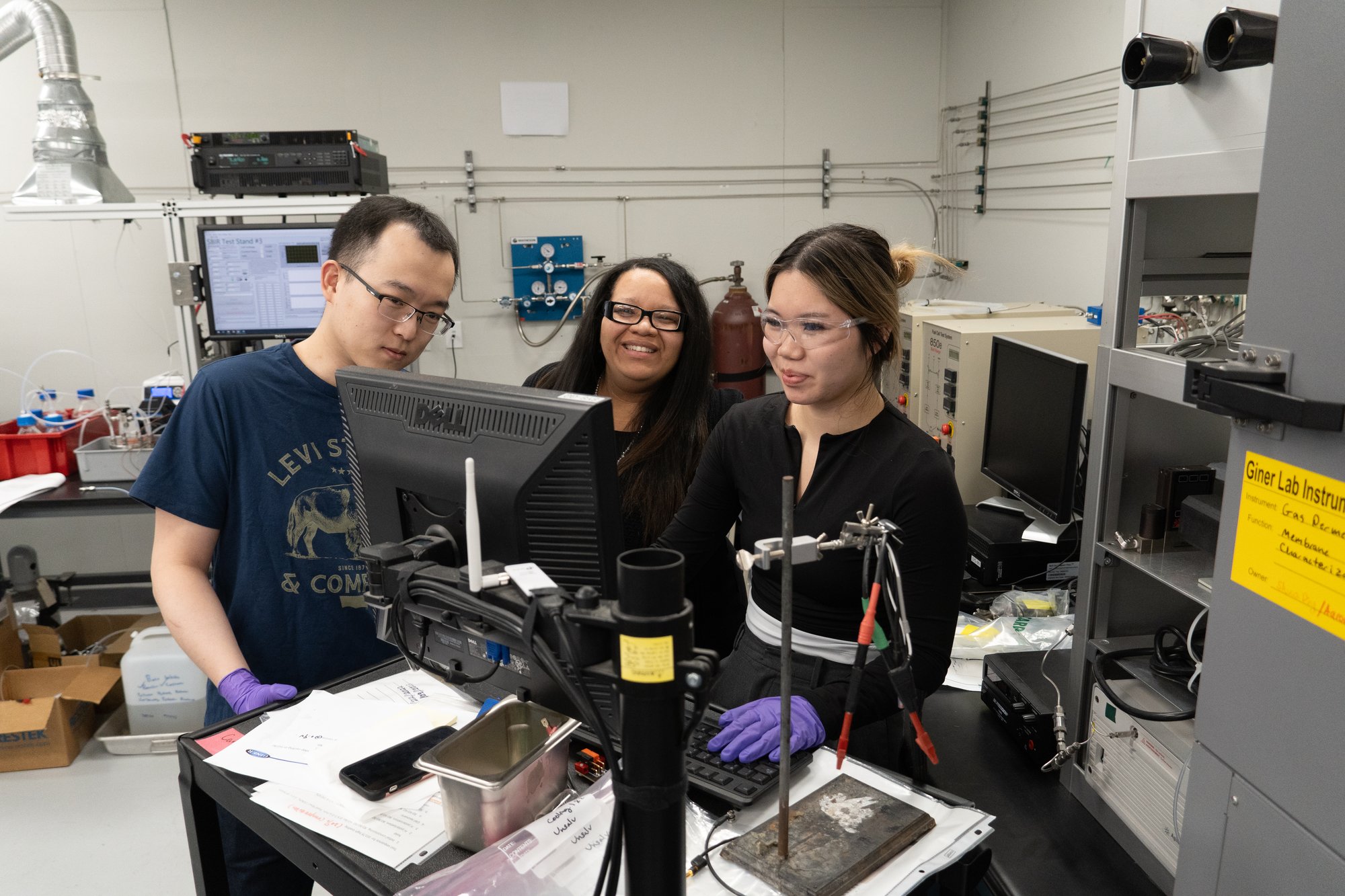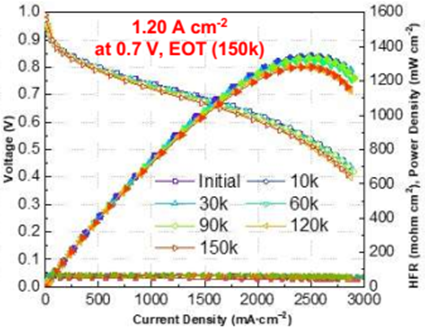PEM Fuel Cells


Durable High Efficiency Membrane and Electrode Assemblies for Heavy Duty Fuel Cell Vehicles
Medium and heavy-duty polymer electrolyte membrane (PEM) fuel cells operate under much harsher conditions than light duty fuel cells and are expected to last 25,000-30,000 hours in the field. These systems must operate successfully in the presence of impurities, starting and stopping, freezing, and thawing, humidity and load cycling. Therefore, materials, components, and interfaces used in such systems must be highly resistant to severe mechanical and chemical stress.
Novel Catalyst Synthesis at Giner
Novel, highly active stable Pt and ordered PtCo intermetallic nanoparticles with well-controlled particle size and composition have been synthesized on a highly efficient PGM-free single metal active site rich carbon, to maximize their synergistic effects for enhanced performance and durability. These catalysts show extraordinary performance and durability in membrane electrode assemblies (MEAs), allowing the MEAs to achieve >1.6 W/cm2 and 1.6 mA/cm2 at 0.7 V, and a performance loss < 40 mV after 150,000 AST cycles. The catalyst batch size and MEA size has been scaled up by 10x, i.e., 50 cm2 MEAs, with equivalent performance seen in the scaled-up catalyst and MEA.

